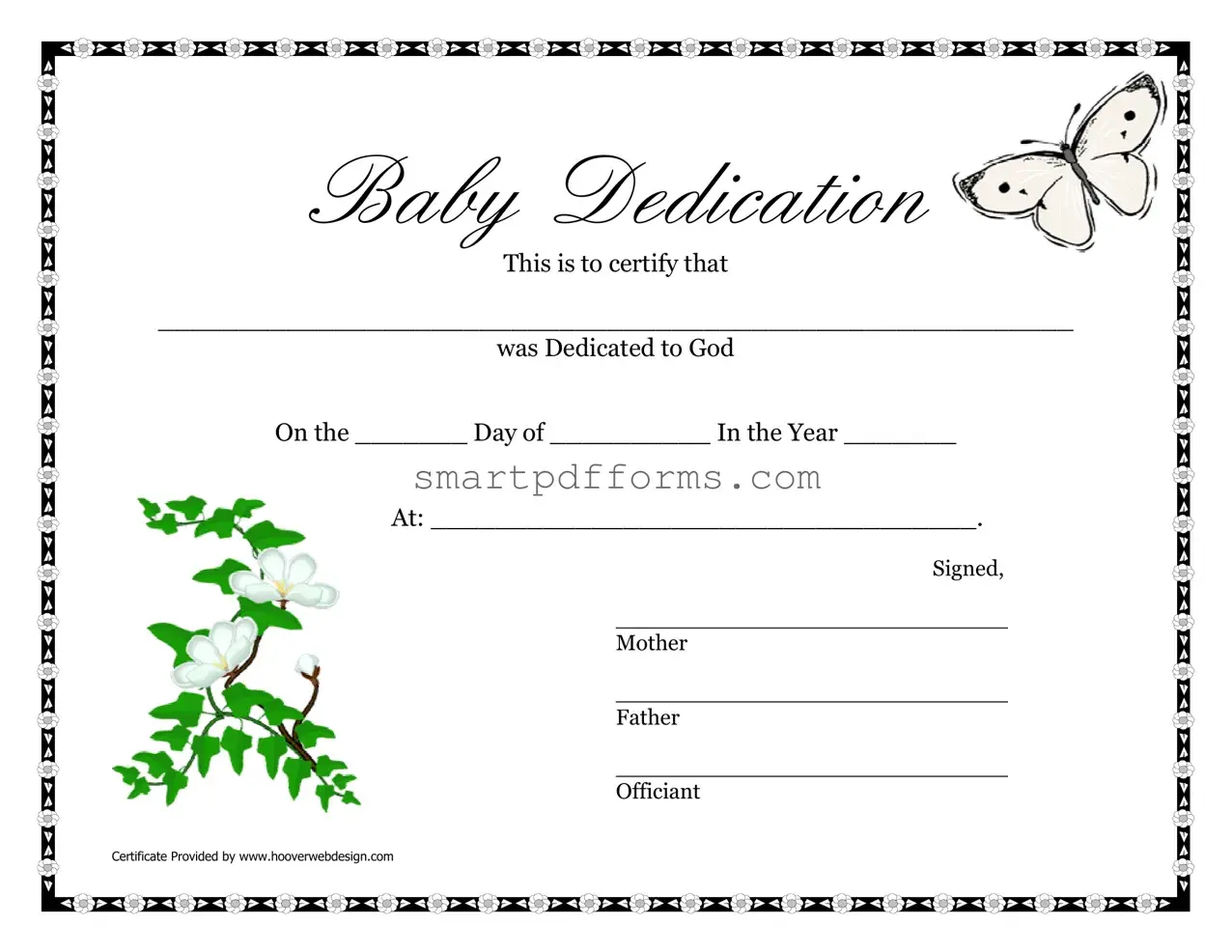Blank Child Dedication Certificate PDF Template
A Child Dedication Certificate form is a document signifying a child's dedication to God, typically filled out and presented during a ceremony within many Christian faith communities. It records the child's name, the dedication date, and details of the ceremony, including the location and the signatures of the parents and officiant. For parents wishing to dedicate their child and commemorate this special day, completing the Child Dedication Certificate form is a meaningful step. Click here to start filling out the form.
Make This Document Now

